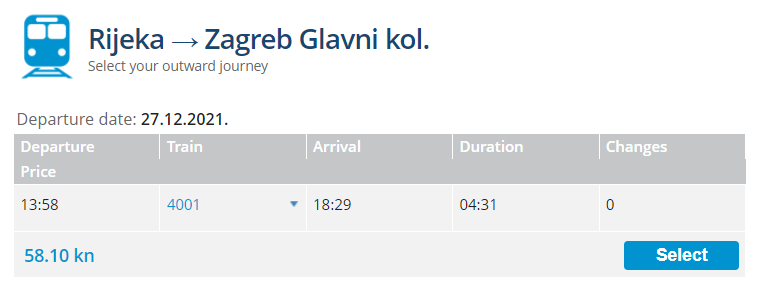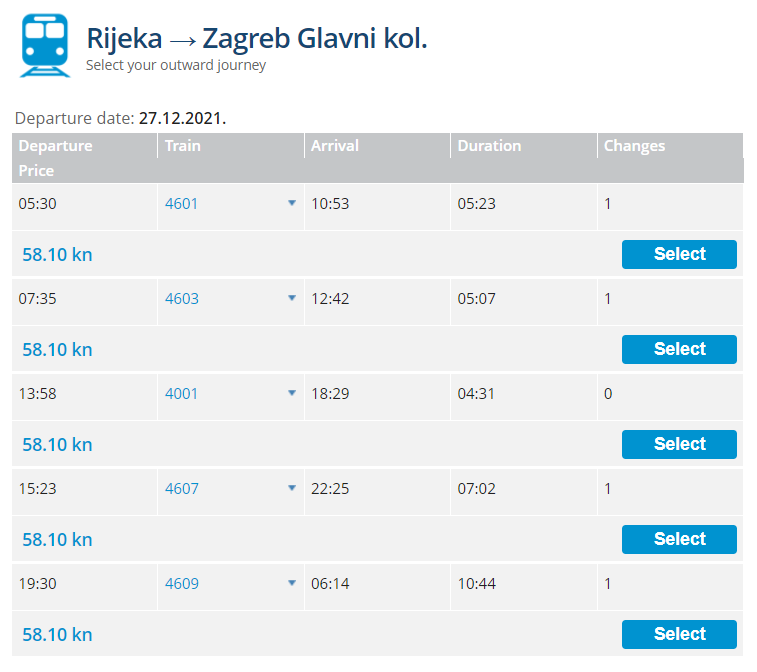Express Train Service to Connect Osijek, Bjelovar and Zagreb as of December
ZAGREB, 10 April 2022 - The Croatian Rail (HŽ) company will introduce an express train between Osijek and Zagreb via Bjelovar as of this December, and will soon introduce low-floor trains on the Zagreb-Bjelovar-Virovitica route.
This is the outcome of a recent meeting between Bjelovar-Bilogora County Prefect Marko Marušić and HŽ Putnički Prijevoz (HŽPP) executives.
In 2021, 120,398 passengers boarded trains at railway stations in this county, a 5% rise from 2020, it was said during the meeting, held in Bjelovar, at which Marušić also requested more favourable train ticket prices for locals.
For more, check out our lifestyle section.
Direct Railway Line Between Bjelovar and Split Will Start this Summer
January 14, 2022 - The Bjelovar-Bilogora County has managed to reach an agreement with HŽPP, and Bjelovar will be connected to the Adriatic by a direct railway line for the first time from July 1st, this year.
The seasonal tourist train will run once a day on the route Osijek-Virovitica-Bjelovar-Zagreb-Split, reports HrTurizam.
It will depart from Osijek at 8 pm, in Bjelovar at 11.35 pm, and at its final destination in Split it should arrive at 8.42 am. Return from Split is planned every day at 22.06 hours, the train would arrive in Bjelovar at 8.11 hours, and in Osijek at 11.36 hours. The line will run until August 27.
"The direct railway line that will connect Bjelovar to the Adriatic for the first time is the result of our efforts and talks we started last autumn. We are extremely pleased with the agreement reached with HŽPP and consider it important progress in connecting Bjelovar with other parts of Croatia," said the prefect Marko Marušić, who talked with the representatives of HŽPP about the better connection of Bjelovar with Zagreb and the possibility of introducing a student train from Bjelovar to Zagreb.
Namely, children and students of primary and secondary schools will be able to travel for free, in accordance with the Conclusion of the Government of the Republic of Croatia on the introduction of a pilot project of free public rail transport, which is in force until the end of this year.
Recall, this pilot project includes unlimited daily train journeys from the place of residence to the place of schooling and occasional trips, such as day trips, trips to the doctor, on vacations and other trips in the 2nd class of regular trains.
If you want to learn more about train travel in Croatia, be sure to check Total Croatia's guide HERE. Now available in your language!
For more, make sure to check out our dedicated travel section.
Travelling from Zagreb to Rijeka by Rail? You Might Want to Reconsider
Railway connectivity between the capital and the biggest Croatian port has been more than inadequate lately, with no express lines available and a single direct line in operation
Rijeka city councillors Ivana Prica and Kristian Čarapić of SDP criticised the poor railway connectivity between Rijeka and Zagreb at a recent press conference, reported Novi list (Marinko Glavan). The councillors demanded that the Croatian Railways (HŽ) reinstate the high-speed train line between Rijeka and Zagreb that was scrapped last year.
‘The last remaining express service operating on the route Rijeka-Zagreb-Osijek was cancelled on December 24th of last year, while the express line Zagreb-Rijeka-Zagreb has been scrapped even earlier. It thus became impossible to travel by rail from Rijeka to Zagreb and back on the same day. It’s shameful that the capital city and the biggest port in Croatia aren't better connected in terms of railway passenger transport’, they said.
A quick search of the HŽ booking page reflects the painful reality of travelling by rail in Croatia. Not only is there no express service between Rijeka and Zagreb, but there’s only one direct line connecting the two cities at present. That particular trip takes 4.5 hours, a tedious ride compared to 2 - 2.5 hours it takes to get to the capital by bus or little over 1.5 hours if you’re travelling by car.
Other four available services involve a change of train halfway through and take anywhere from 5.5 hours for an early morning service to almost 11 hours in case of a night line:
Trip duration listed on the timetable is the best case scenario. The site warns that ‘due to work on certain sections of the railway, deviations from the published timetable are possible’. This is a frequent occurrence that’s more than likely to extend the duration of your trip by an hour or two and involves a transfer from a train to a bus.
The timetable could use some work as well. The only direct line departs from Rijeka at 1:58 PM and arrives in Zagreb at 6:29 PM. It’s unclear who would find this convenient, as you’d technically waste half a day before departure and would effectively be forced to stay in Zagreb overnight in case you need to get anything done.
There are two morning lines, departing at 5:30 and 7:35 AM, but they only arrive in the capital at 11 AM and 12:42 PM respectively. If you opted for one of these, you’d have no way of getting back to Rijeka on the same day, unless you were willing to either hop on a return train an hour after your arrival, or endure a 13-hour overnight train ride. Here’s the schedule:
The only direct line from Zagreb to Rijeka departs at 8 in the morning and also has a 4.5 hour trip duration. The timetable doesn’t match a normal workday schedule, and frequent travellers on this route - such as college students - essentially don’t have a choice but to travel by bus.
It’s a shame, as travelling by rail is not only more comfortable than taking a bus, but is also the most sustainable mode of passenger and freight transport.
Bus lines between Zagreb and Rijeka (and vice versa) are much more frequent, with several companies operating on the route and departing every hour or so throughout the day.
There’s not much to complain about on that front, except if you were looking to make a day trip to Zagreb during the holiday season. The last Zagreb-Rijeka bus departs at 7 PM on most days (weekends included), so if you were hoping to revel in the festive spirit of Advent in Zagreb, you’d be limited to daytime activities.
Arguably, Christmas markets are best enjoyed in the evening, and you’d have an hour or so to get a cup of mulled wine and appreciate the sparkling lights before hurrying back to the bus station. This goes for those travelling back to Istria as well, as the mentioned 7 PM service is also the last one that continues on to Pazin and Pula after a stop in Rijeka.
Perhaps a good way for the capital to generate more overnight stays in December, but considering how popular Advent in Zagreb has been in recent years, it could use a few more bus lines in evening hours to accommodate those who don’t necessarily want to spend the weekend.
€5.4 bn To Be Invested in Railways Upgrade Until 2030
ZAGREB, 11 Oct 2021 - The Croatian railway system should be restructured and upgraded to the European level by 2030, with the value of related projects estimated at €5.4 billion, it was said at a conference organized by the Hanza Media publishing company in Zagreb on Monday.
Addressing the event, Transport and Infrastructure Minister Oleg Butković said that current investments in the transport sector totaled just above HRK 25 billion, with investments in the railway sector accounting for about 11 billion.
"As a sector, the railway is in a neglected state and it is a major challenge for the government to build, modernize and restructure it... and raise it to the European level by 2030," Butković said, noting that the National Recovery and Resilience Plan envisaged HRK 670 million for the railways and pointing in that regard also to the Multiannual Financial Framework.
€5.4 billion to be invested in railways until 2030
HŽ Infrastruktura railway maintenance company CEO Ivan Kršić said that projects to build and modernize the railway infrastructure in the period until 2030 amounted to €5.4 billion, while the length of renovated and modernized railways would be 780 kilometers or 30% of the total network, to be mostly co-financed by the EU with 85% of the necessary funding.
Most of the investments referred to projects along two transport corridors - RH1, running from the border with Slovenia to the border with Serbia, and RH2 - stretching from the northern Adriatic port city of Rijeka to the border with Hungary.
Three projects have been completed so far along Corridor RH1 and four more sections are in different stages of preparation or implementation.
One of the active projects along Corridor RH2 is the Dugo Selo-Križevci railway section, which must be completed by 2023, while reconstruction work on several other sections is expected to start soon.
In addition to the two corridors, 12 more projects are planned on the rest of the railway network, Kršić said.
Passenger Transport 31% Down, Transport of Goods 4.5% Down in Q1
ZAGREB, 20 May 2021 - A total of 11.3 million passengers were transported in Croatia by all means of transport in the first three months of 2021, which is around 5.2 million fewer passengers or a 31.4% drop from the same period of 2020, while the transport of commodities dropped by 4.5% to close to 28 million tonnes.
According to preliminary figures released by the national statistical office, in Q1 the most passengers, 7 million, were transported by bus, a drop of 32% compared to Q1 2020.
As for the transport of goods, 18 million of the 28 million tonnes of commodities were transported by road, a 7.4% drop from Q1 2020.
Goods were also transported by ship, with 4.2 million tonnes of commodities transported that way, which is as much as 12% more than in Q1 2020.
Three and a half million tonnes of goods were transported by rail, 3.6% down from Q1 2020, while transport via inland waterways saw a drop of 17% compared to Q1 2020, to 948,000 tonnes.
Around two million tonnes of goods were transported by pipelines.
As for air transport, 298 tonnes of goods were transported by plane in Q1 2021, a 41% drop from the same period as last year.
For more about business in Croatia, follow TCN's dedicated page.
Croatian Railways Slashes Train Ticket Prices from Zagreb to Coastal Cities
May 16, 2021 - Croatian Railways has launched a sale on train ticket prices from Zagreb to coastal cities in Croatia!
HRTurizam reports that Croatian Railways Passenger Transport (HŽPP) has announced special prices for travel on direct routes from Zagreb to the coast.
Prices refer to one-way trips on direct routes in the 1st and 2nd class of passenger, high-speed, and IR trains for which tickets are purchased at the box office and on the train. Also, HŽ stated that the prices of tickets purchased through online sales and smartphone applications had been further reduced, and train tickets can also be purchased at Tisak kiosks.
Train ticket prices from Zagreb
Zagreb GK - Rijeka / Rijeka - Zagreb GK 65 kn
Zagreb GK - Zadar / Zadar - Zagreb GK 100 kn
Zagreb GK - Šibenik / Šibenik - Zagreb GK 100 kn
Zagreb GK - Split / Split - Zagreb GK 110 kn
Zagreb GK - Pula / Pula - Zagreb GK 80 kn
The offer is valid until June 30, 2021, and the return of partially or completely unused tickets is not possible.
2021 is the European Year of Railways
The European Commission's (EC) initiative highlights the benefits of rail as a sustainable, smart, and safe means of transport. In 2021, various activities will bring rail to the forefront across the continent, encourage citizens and businesses to use rail, and contribute to the goal of the European Green Plan, according to which the EU should become climate neutral by 2050.
One of the key elements of the Plan is the introduction of cleaner and healthier means of transport, given that the transport sector is currently responsible for around 25% of EU greenhouse gas emissions. The European Green Plan calls for a 90% reduction in traffic emissions by 2050.
To achieve this goal and ensure that transport continues to play a role during the transition to a clean, digital and innovative EU economy, the EC adopted a Sustainable and Smart Mobility Strategy in December 2020. It paves the way for more sustainable, smarter, and resilient mobility and includes milestones towards doubling rail freight by 2050 and tripling high-speed rail connections by 2050. In 2021, the EC will present an action plan to strengthen rail passenger transport, which follows the strategy to improve capacity and simplify the system of ticket sales for various modes of transport to increase the attractiveness of rail further.
For more on travel in Croatia, follow TCN's dedicated page.
Deer Killed By Train, Stolen By Train Driver, Later Caught Drunk Driving
January 26, 2021 – Road kill we've heard of. But rail kill? One Slavonia deer killed by train was due to end up on the dining table of a train driver, who stopped his train to stuff the dead deer into his cab, before later being caught drunk driving with the decapitated animal in his trunk
Road kill we've heard of. But rail kill? One Slavonia deer killed by train was due to end up on the dining table of a train driver, who stopped his train to stuff the dead animal into his cab. Alas, the čobanac (a spicy, wild meat stew, popular in Slavonia) was not meant to be. He was caught drunk-driving the next day by police at a traffic stop in Vinkovci and arrested.
It's perhaps easy to understand the train driver not wanting to look such a gift horse, or deer, in the mouth. This is not the first deer killed by train or car within the wild rural landscape of Slavonia. With the unfortunate collision having offered the opportunity for fine dining, the train driver apparently had a one track mind.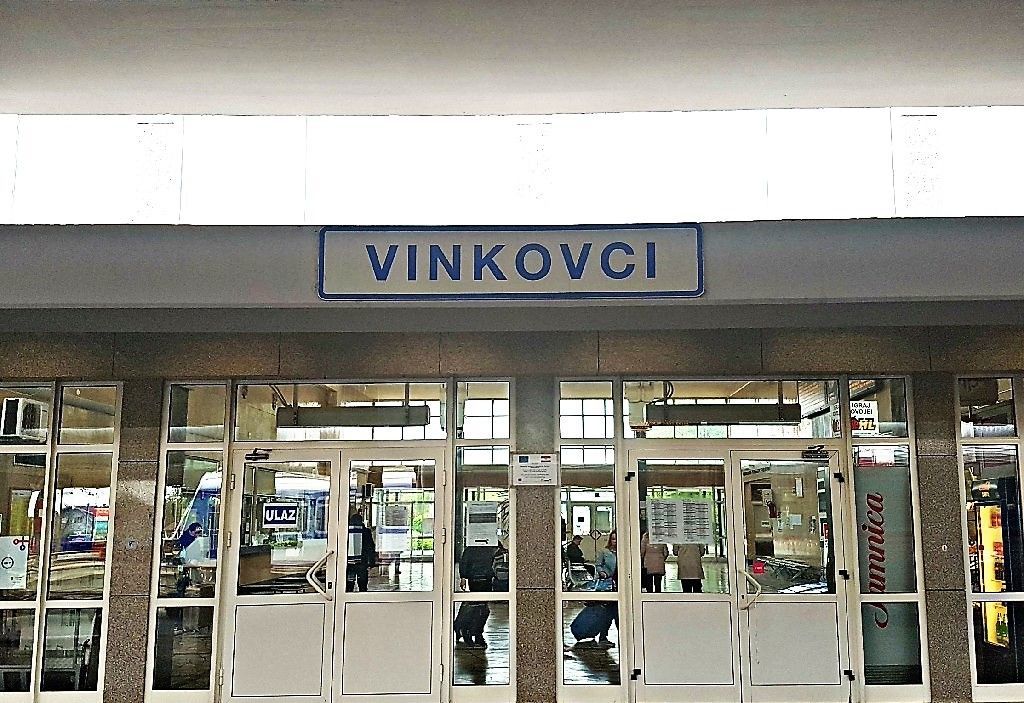
However, with the benefit of hindsight, it was perhaps not the best i-deer to retrieve the sizeable body of the deer killed by train to save for a later feast. Less easy to forgive is that he was caught with the deer while driving his car under the influence of alcohol. Such foolhardiness is no way to go about covering your tracks.
Police halted the man around 5pm on January 12 at a regular traffic roe-d stop and breathalysed him, as they correctly suspected he had been drinking. The 56-year-old man, who had Vinkovci license plates was found to be under the influence of alcohol (1.22 g / kg). However, that was just the first of the finds on the stop.
Upon searching the car trunk, police discovered the decapitated corpse of a sizeable deer. It turned out the train driver had stopped his train the day before to retrieve the animal and placed it in the driver's cab for consumption at a later date. The animal was presumably being transported home – or to a local butcher – by car the next day. But, the traffic stop put an end to any notions of a free meal.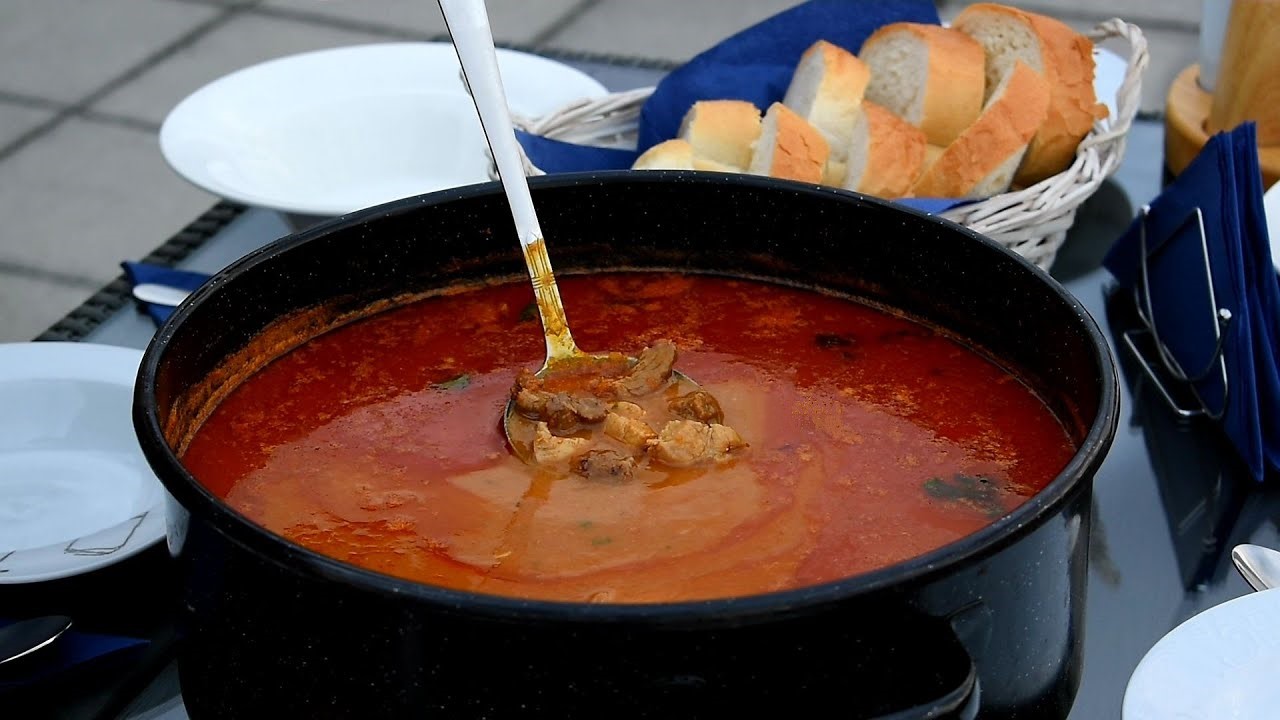 Cobanac, a hearty, spicy stew made in Slavonia using deer and other wild meats. Alas, it was not meant to be © Youtube screenshot
Cobanac, a hearty, spicy stew made in Slavonia using deer and other wild meats. Alas, it was not meant to be © Youtube screenshot
The deer corpse was confiscated and handed over to the hunting society of Stari Mikanovac for safekeeping until a warrant for an autopsy was obtained in order to determine the cause of death. Pursuant to the order of the Vinkovci Municipal State Attorney's Office, the examination of the deer carcass was performed by the Vinkovci Veterinary Institute.
For the appropriation of the deer, the police filed a complaint at the Municipal State Attorney's Office in Vinkovci against the 56-year-old for the criminal offence of theft. For his inebriated driving, the man was issued a misdemeanour order, imposing a fine of HRK 5,000 and was banned from driving a "B" category vehicle for two months. Having been charged for both excess beer and excess deer, at the time of the police road stop you could say the game was well and truly up.
All Full-Time Osijek and Baranja Students Get Free Train Travel
January 9, 2021 – From this year, full-time Osijek and Baranja students can get free train travel any time throughout their own county and for travel to educational centres anywhere in Croatia, in a new deal struck by the county and the national train operator
Once a sea bed, the vast flatlands of Slavonia are perfect for farming. At one time, this area was the breadbasket for much of Yugoslavia. It really wasn't so long ago that many folks left dry and dusty Dalmatia in search of employment and new lives on this fertile ground. Now, it's the other way round - Slavonian youth travel to the coast each summer in search of seasonal work. Others move to Ireland, Germany, Austria. Slavonia is losing many skilled younger people at an alarming rate. Increased mechanisation has reduced the need for labour in the area's agriculture. And, besides, most Slavonian youths are these days educated to a degree where their ambitions are greater than joining local agricultural endeavours.
In an area with limited possibilities, limited opportunities, education lies at the heart of survival in Slavonia. Local authorities know this and try to facilitate education as best they can. It is to that end that those in the Slavonian county of Osijek and Baranja have struck a deal with Croatia's national train operator to offer free train travel to all full-time Osijek and Baranja students.
Agreed upon at the end of last year, the scheme was implemented on 1 January 2021. Osijek and Baranja County has agreed to co-finance journeys for full-time Osijek and Baranja students who study not only within the county itself but across the whole of Croatia. Osijek train station © Romulić & Stojčić
Osijek train station © Romulić & Stojčić
Monthly tickets for travel within the county already held a discount of up to 65 percent given to full-time students by the train operator, depending on the route. The County has now agreed to pay the remainder of the monthly ticket for all full-time Osijek and Baranja students. To meet the requirements of this deal, the departing and destination stations must both be in Osijek-Baranja County. The free monthly ticket allows an unlimited number of trips on the route, meaning that Osijek and Baranja students can also use the train for free on recreational journeys within the county.
The second deal sees the County co-finance 50% of journey costs for full-time Osijek and Baranja students who study elsewhere in Croatia, with the train operator HŽ agreeing to grant a discount to cover the other 50 %.
In order to obtain a free (monthly or individual) ticket, it is necessary to first obtain a certificate from their Administrative Department for the Economy. To get the certificate, Osijek and Baranja students must submit a copy of their identity card, a certificate of full-time study and two completed application forms (these can be found on the county's website www.obz.hr). Requests can be made in person or by mail (Osijek-Baranja County, Administrative Department for Economy, Županijska 4, Osijek or on the e-mail: This email address is being protected from spambots. You need JavaScript enabled to view it.
Free tickets can thereafter be bought by Osijek and Baranja students at the box office, prior to travel, or on the train itself, upon producing the relevant and needed documentation.
Kvarner Goes Green: Opatija and Rijeka Integrated Rail and Bus
January 7, 2021 – From the Bay of Bakar through the beaches of Rijeka to the opulence of Opatija and up, all the way to the border with Slovenia, Kvarner residents and visitors will be able to travel with just one ticket across the whole of the Rijeka integrated rail and bus network
An existing co-operation between rail and bus operators in Kvarner was today extended, allowing the Rijeka Integrated Rail and Bus network to continue for at least another year. This holds exciting implications for travel in the region for years to come.
Planned changes to the infrastructure of the coastal part of the north Kvarner Bay mean that within the Rijeka integrated rail and bus scheme, you will soon be able to travel from the Bay of Bakar, stop off at a series of Rijeka beaches, hop back on public transport to go to Opatija and even travel beyond the coast, all the way to the border with Slovenia, using just one ticket. Passengers will not be limited in their choice to travel by either aril or bus.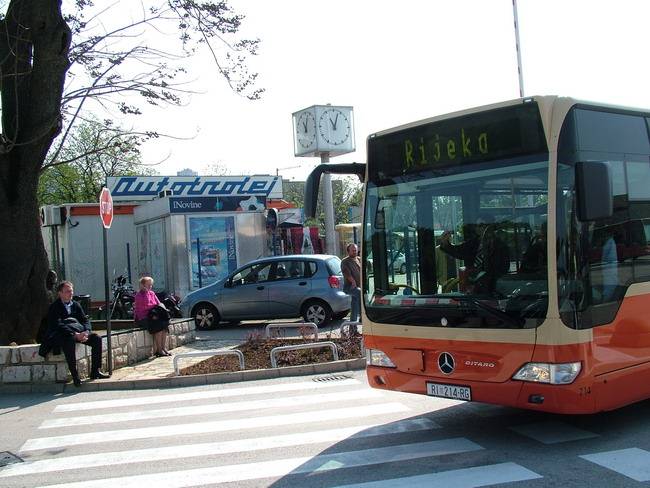
An Autotrolej bus, longtime providers of local bus services in Rijeka © Grad Rijeka
The Rijeka integrated rail and bus scheme, organised through Kvarner County, Rijeka, Matulji and Bakar Town Halls, rail and local bus operators is an eco-friendly drive that seeks to encourage people to leave their cars at home and instead choose public transport. However, access to the Rijeka integrated rail and bus network is not limited to commuting workers and travelling students. Although the scheme is most cost-effective using a monthly ticket, day tickets are available for the network which may be of huge appeal to visitors wishing to explore a wider portion of Kvarner's northern coast.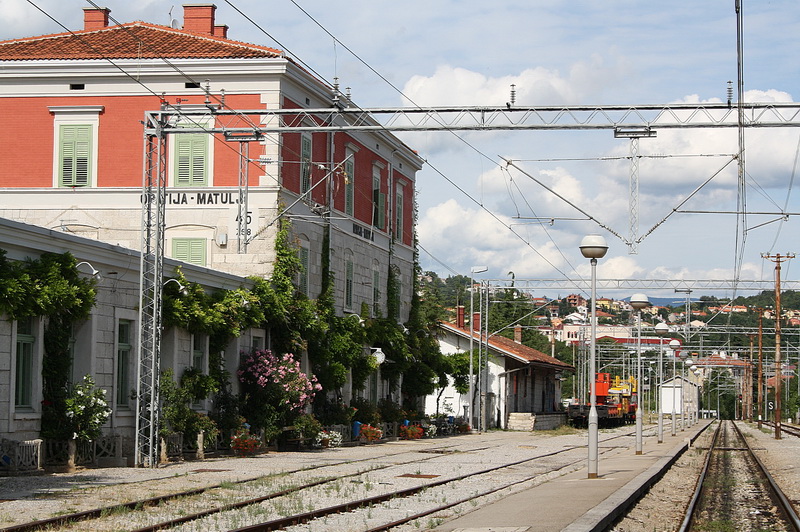
The train station of Opatija Matulji © Damir Covic 1939 / Matulji Tourist Board
Rijeka integrated rail and bus: International
What makes the extension of the Rijeka integrated rail and bus scheme even more welcome is the planned overhaul of infrastructure that will accompany it.
Fifteen extra stations will be added (or reactivated) on the route between Kantrida in the west of Rijeka, along the Rijeka seafront and on to the outskirts of Bakar. Furthermore, the entire train line from Bakar to Šapjane will be brought into the Rijeka integrated rail and bus scheme with the completion of a second train track along the route. Trains along the line at Šapjane. Next stop Slovenia! © DiningCar_
Trains along the line at Šapjane. Next stop Slovenia! © DiningCar_
Šapjane, in the municipality of Matulji, lies 20 kilometres inland, north of Opatija. It sits right on the border with Slovenia. The train line extends across this border, through the Slovenian town of Ilirska Bistrica, and then on to Postojna and Ljubljana, Italy or Austria. This means the Rijeka integrated rail and bus scheme will be directly linked to another green, international travel network.
These routes will all be linked to the incoming, double-tracked Pan-European fast train network, which, as TCN highlighted last year, will connect this part of Kvarner with France, Spain and Portugal in the west all the way to eastern Hungary via Zagreb and Budapest. Needless to say, it will require more than a single day ticket (cvikalica) from the Rijeka integrated rail and bus network to make such a journey!
Croatia Pan Europe Trains Will Run 160 Kilometres Per Hour By 2030
November 2, 2020 – From southern Spain to Budapest through Rijeka and Zagreb and from Salzburg through Zagreb, Belgrade and Skopje to Greece, Croatia pan Europe trains will run 160 kilometres per hour by 2030
In the biggest investment ever made in the infrastructure of the country's rail network, Croatia pan Europe trains will run 160 kilometres Per Hour By 2030. In an investment costing 4.5 billion Euros, 750 kilometres of railways will be modernised.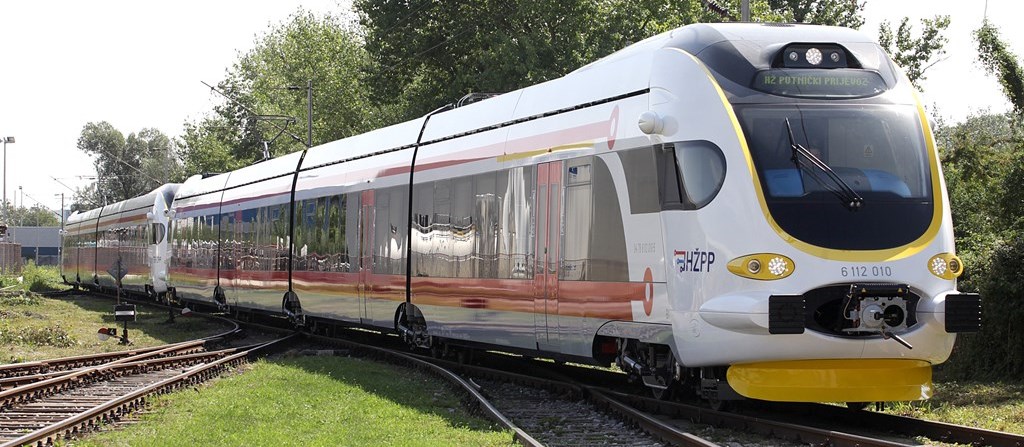 © HZPP
© HZPP
The lines that will receive the upgrade will connect Rijeka to Budapest in Hungary via Zagreb (RH2) and Zagreb to Belgrade via Vinkovci (RH1). Though these lines already exist, they have never undergone an overhaul of the scale proposed. The modernisation with ensure double lanes across the whole of both routes and facilitate passenger train speeds of 160 kilometres per hour.
The level of investment means that during the next ten years, HŽ Infrastruktura's (Croatian Railway Infrastructure Company) rebuild of the Croatia pan Europe trains network will be the largest infrastructure project in the Republic of Croatia and the largest beneficiary of EU grants in the transport sector. Most of the money for the modernisation is coming from European Union grants. Almeria on the Mediterranean, in Andalusia, southern Spain, where the Mediterranean Corridor begins © ddz photo
Almeria on the Mediterranean, in Andalusia, southern Spain, where the Mediterranean Corridor begins © ddz photo
The RH2 line is part of the Mediterranean Corridor which connects the south of the Iberian peninsula with eastern Hungary via six countries. The line runs from Almeria on the Mediterranean coast in the south-east of Spain, through Madrid and Barcelona. It passes through Marseille in France, then northern Italy, Slovenia, Croatia, the Hungarian capital of Budapest, before finishing in Záhony in the east of Hungary, not far from the border with Ukraine. The route covers more than 6000 kilometres. The Croatian section will pass through Jurdani (six kilometres north of Opatija), Rijeka, Karlovac, Zagreb, Dugo Selo, Križevci and Koprivnica.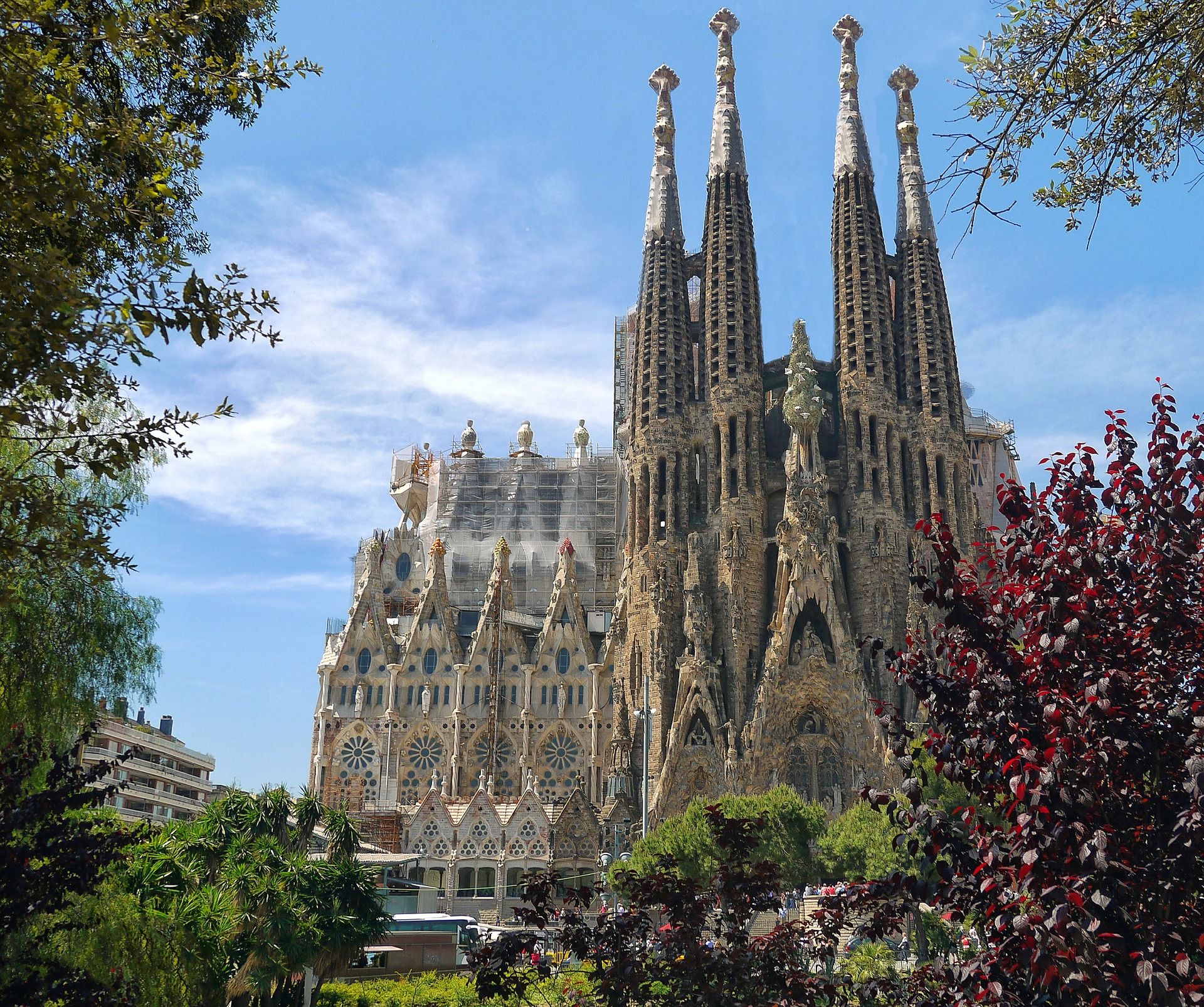 To Croatian rail passengers, the Spanish city of Barcelona will be just a few hours away by 2030 © Patrice Audet
To Croatian rail passengers, the Spanish city of Barcelona will be just a few hours away by 2030 © Patrice Audet
The RH1 line is part of the Pan-European Corridor X. The Croatia pan Europe trains section of this transport route was once one of the three lines taken by the Orient Express. The modernised rail line will start in Salzburg, Austria and pass through Ljubljana before reaching Zagreb. The line will pass through Slavonski Brod and Vinkovci before making its way to Belgrade, then Niš in southern Serbia. The old Oriental Express line then headed east, to Istanbul via Sofia, Bulgaria. The EU-funded train section of the Pan-European Corridor X instead heads south, to Thessaloniki in Greece via Skopje in Macedonia.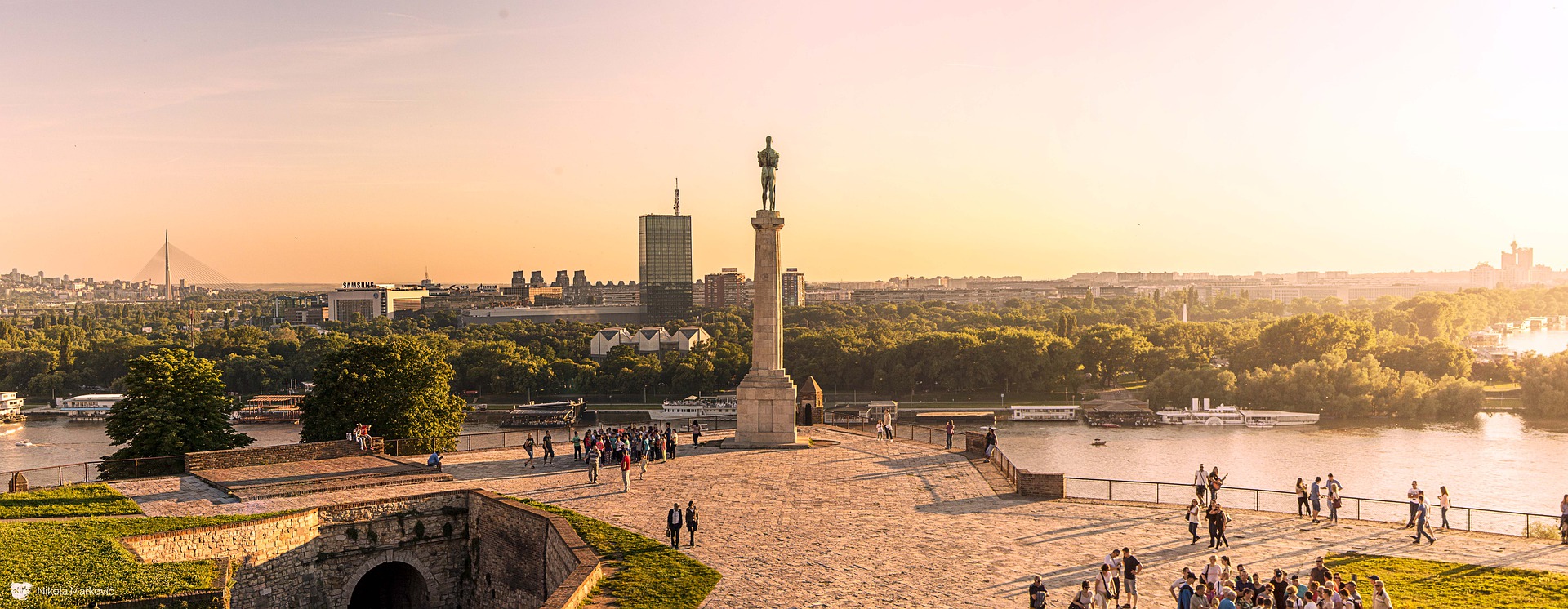 The rail journey time between Zagreb and Belgrade (pictured) will be shortened considerably by the improvements © Djordje Jovanovic
The rail journey time between Zagreb and Belgrade (pictured) will be shortened considerably by the improvements © Djordje Jovanovic
Trains are currently the greenest transport option for long-distance travel. As the world heads in the direction of seeking energy sources that do not rely on finite fossil fuels, rail also currently looks to be the long-distance travel option best-equipped to meet this challenge. In the future, visitors from all across Europe may increasingly rely on the Croatia pan European trains network in order to access the country. The improvements also increase business and leisure opportunities for Croatians in Europe. Thessaloniki in Greece is one of the most popular cities in Europe for visitors. The renewed rail section of the Pan European Corridor X will end here © Dimitris Vetsikas
Thessaloniki in Greece is one of the most popular cities in Europe for visitors. The renewed rail section of the Pan European Corridor X will end here © Dimitris Vetsikas
Around 935 million Euros was invested in the Croatian railway infrastructure between 2010 and 2019. The new investment dwarfs those figures. The initial investment, occurring between 2020 and 2024 amounts to as much as 1.8 billion Euros, of which almost 78.7 per cent is co-financed by the European Structural and Investment Funds (ESI) and the Connecting Europe Facility (CEF). From 2025 to 2030, EU funds totalling more than 2.7 billion Euros are expected to be invested in the Croatia pan European trains network.
Freight train passage along the lines will also be increased, reaching a new speed of 120 kilometres per hour. The Croatia pan European trains network also offers great potential to open up continental Croatia regions to international visitors. The Croatian railway network currently has 2,617 kilometres of track, of which 274 kilometres are double-track and 980 are electrified.
For the latest travel info, bookmark our main travel info article, which is updated daily.
Read the Croatian Travel Update in your language - now available in 24 languages


